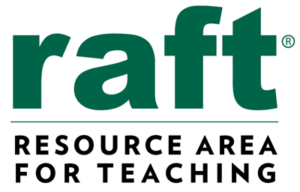RAFT’s ‘Reason for the Seasons’ and ‘Time for Shadows’ Idea Sheets Help Students Understand What Causes Our Seasons
Use Hands-On Activities to Teach Seasonal Variations
SAN JOSE, CALIF. – November 30, 2016 – RAFT – Resource Area for Teaching, the leading solution center to help educators in transforming a child’s learning experience through hands-on education, announces the res 2016 is coming on December 21 at 10:44 UTC. Just what is the winter solstice? For those of us in the Northern Hemisphere, the December solstice marks the longest night and shortest day of the year. Meanwhile, the Southern Hemisphere has its longest day and shortest night. The solstice is an astronomical event, caused by Earth’s tilt on its axis, and its motion in orbit around the sun.
The tilt of the Earth – not our distance from the sun – is what causes winter and summer. Most people believe our seasons are the result of our changing distance from the sun but that’s not true. We are actually closest to the sun in winter and farthest during the summer months, just the opposite of what many believe. The seasons are not due to our location but are instead the result of changes in the amount of solar energy which is received at the Earth’s surface.
This concept can be difficult for students to grasp. RAFT’s ‘Reason for the Seasons’ Idea Sheet has students use a flashlight to simulate the angle of the sun at different times of the year. They observe how the light disperses differently depending on the season. Students see when the light hitting the earth is direct vs indirect, the area impacted, and how shadows change. This activity helps students understand the location of the Earth in relation to the sun and that the cause of seasonal temperature differences is the concentration of sunlight. During summer, in either hemisphere, the Earth’s axis of rotation is tilted towards the sun, causing longer days. As the sunlight then falls more directly its concentration increases. These two factors cause higher temperatures. During the winter, as the Earth tilts away from the sun, we see shorter days, more indirect sunlight, and then lower temperatures.
RAFT’s ‘Time for Shadows’ Idea Sheet has students assemble an equatorial sundial, which is really a small model of the earth. With their sundial students can use the movement of shadows to track the passage of time. The first sundials were probably just sticks but they allowed people to make observations of repeating patterns, such as the longer summer days. As measurements became more precise special dates, such as the upcoming winter solstice, could be predicted. This contributed critical information to know when to plant or harvest crops or prepare for seasonal events such as flooding or animal migrations.
Together RAFT’s ‘Reason for the Seasons’, here, and ‘Time for Shadows’, here, help students understand seasonal variations with hands-on activities.
Find out more about RAFT and how to get involved at www.raft.729solutions.com
About RAFT – Resource Area For Teaching
RAFT – Resource Area For Teaching is a non-profit, resource solution to help educators transform a child’s learning experience through hands on education to one that inspires the joy and discovery of learning. Founded in 1994, RAFT focuses on providing educators of all types – classroom teachers, after school educators, home-school educators, scout leaders, early care and education professionals – with effective, engaging, affordable hands-on learning resources aligned to national curriculum standards. RAFT, believes the best way to spark a love of learning for the next generation of thinkers, innovators, problem-solvers, and creators is through hands-on learning. RAFT supports some 11,000 educators in enriching and improving the education of more than 850,000 students young year.
# # #
©1994-2016 Resource Area For Teaching. All rights reserved. The RAFT logo and RAFT product names referenced herein are trademarks or service marks of RAFT – Research Area For Teaching. All other trademarks, trade names, service marks, and logos referenced herein belong to their respective companies.

